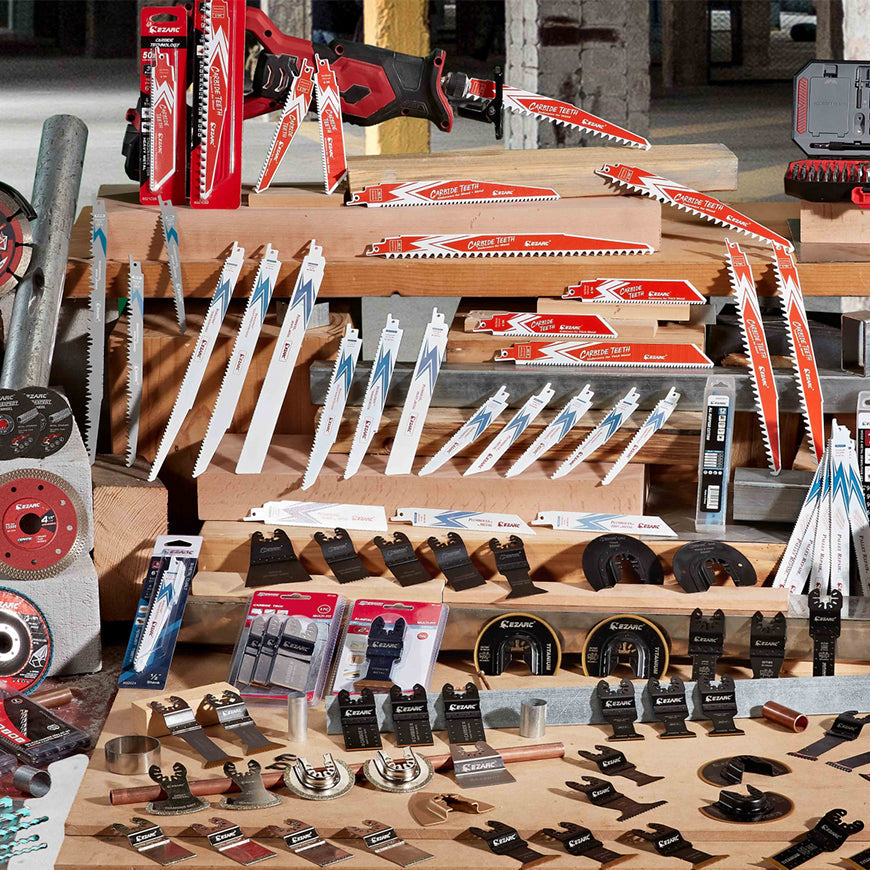Oscillating tools, also known as multi-tools, are incredibly versatile devices that can be used for a wide range of tasks, including cutting, sanding, grinding, and scraping. One of the key features of these tools is their ability to use a variety of different blades, each of which is designed for a specific purpose. In this blog post, we will guide you through the process of choosing the right blade for your oscillating tool.
Step 1: Determine the Material to be Cut
The first step in choosing the right blade for your oscillating tool is to determine the type of material you will be cutting. Oscillating tools can be used to cut a wide range of materials, including wood, metal, plastic, and drywall, but each material requires a different blade.
For wood, a standard wood-cutting blade with large teeth is typically the best option, while metal requires a blade with smaller teeth and a high-speed steel construction. Plastic, on the other hand, can be cut with a variety of blades, including a carbide grit blade or a diamond-grit blade. Drywall requires a blade with a smaller profile and a serrated edge to minimize dust and debris.
In EZARC, when cutting wood and plastic materials with low hardness, we recommend using CRV oscillating multi tool blades, such as this Japanese teeth oscillating saw blade. Its triple ground Japanese teeth can provides extremely clean and fast cutting surface for wood cutting as well as the plastic cutting.

While for the metal cutting, using more hard material blade would be appropriate. For this purpose, you can check the titanium oscillating multi tool blade and the carbide oscillating multi tool blade.
Step 2: Consider the Blade Shape
The shape of the blade is also an important factor to consider. Oscillating multi tool blades come in a variety of shapes, including straight, semi-circular. The shape of the blade will depend on the task at hand.
For example, a straight blade is ideal for making precise cuts in wood.

EZARC Extra Long Oscillating Multi Tool Blade
And the semi-circular blade is better suited for long distances of flat cut.

Semi CircleTitanium Oscillating Blade
Step 3: Check the Blade Size
The size of the blade is another important factor to consider. Oscillating tool blades come in a range of sizes, from small 1-1/4 inch blades to large 3-3/8 inch blades. The size of the blade you choose will depend on the size of the material you are cutting.
For smaller materials, a smaller blade will provide better control and precision. For larger materials, a larger blade will be able to make cuts more quickly and efficiently.
In conclusion, choosing the right blade for your oscillating multi tool requires careful consideration of the material you will be cutting, the blade shape, size, and material. By taking the time to select the right blade for your task, you can ensure that your oscillating multi tool performs at its best and provides you with the results you need. If you're in need of high-quality oscillating tool blades, check out ezarctools.com for a wide range of options that cater to a variety of needs.

 Oscillating Multi-Tool Blades
Oscillating Multi-Tool Blades
 Reciprocating Saw Blades
Reciprocating Saw Blades
 Cutting & Grinding
Cutting & Grinding
 Hole Saw
Hole Saw
 Drilling
Drilling
 Sanding & Polishing
Sanding & Polishing
 Hand Tools
Hand Tools
 Metal Worker & Fabrication
Metal Worker & Fabrication
 Woodworking & Carpentry
Woodworking & Carpentry
 Electrical & Plumbing
Electrical & Plumbing
 Automotive
Automotive
 Concrete & Masonry
Concrete & Masonry
 Demolition
Demolition
 NEW ARRIVALS
NEW ARRIVALS



コメントを書く
このサイトはhCaptchaによって保護されており、hCaptchaプライバシーポリシーおよび利用規約が適用されます。